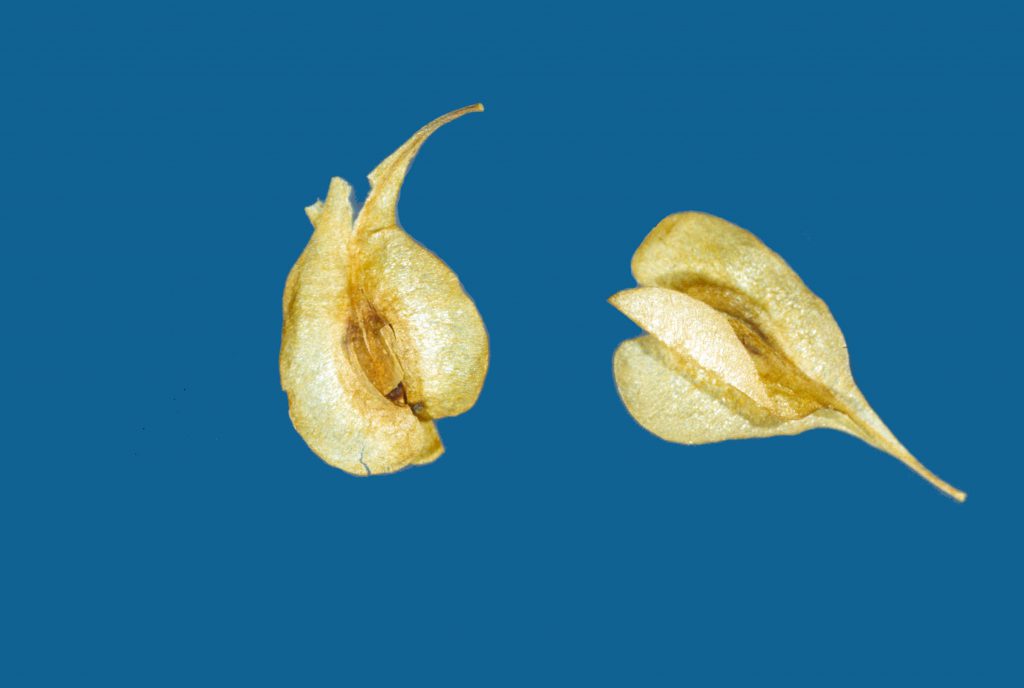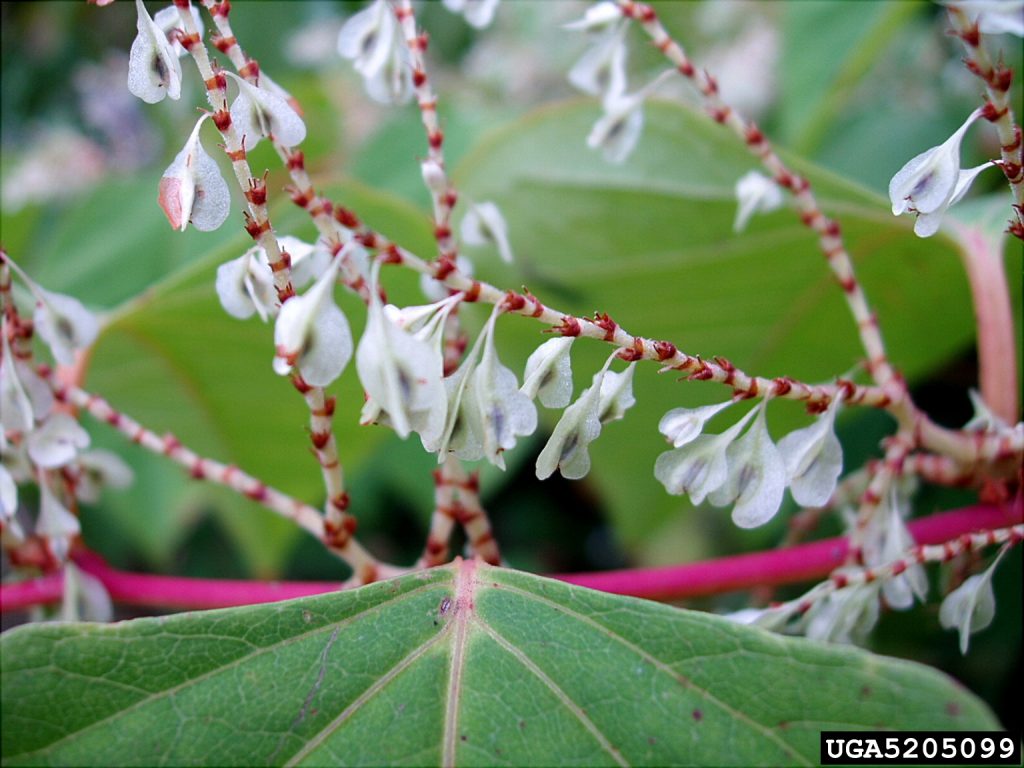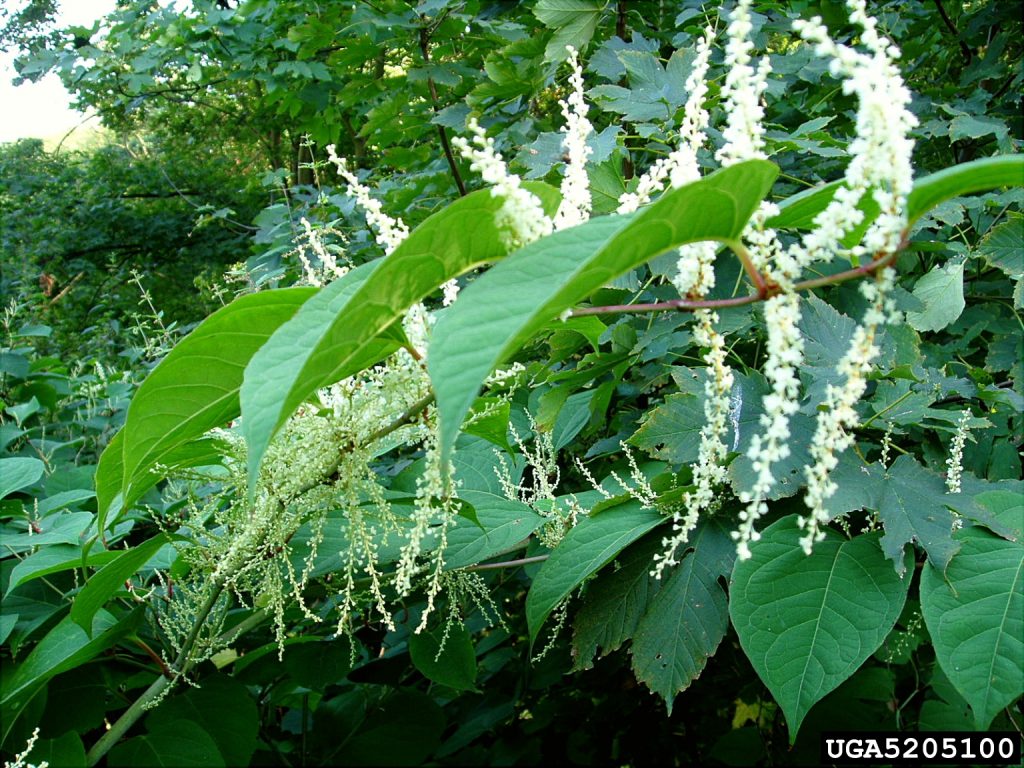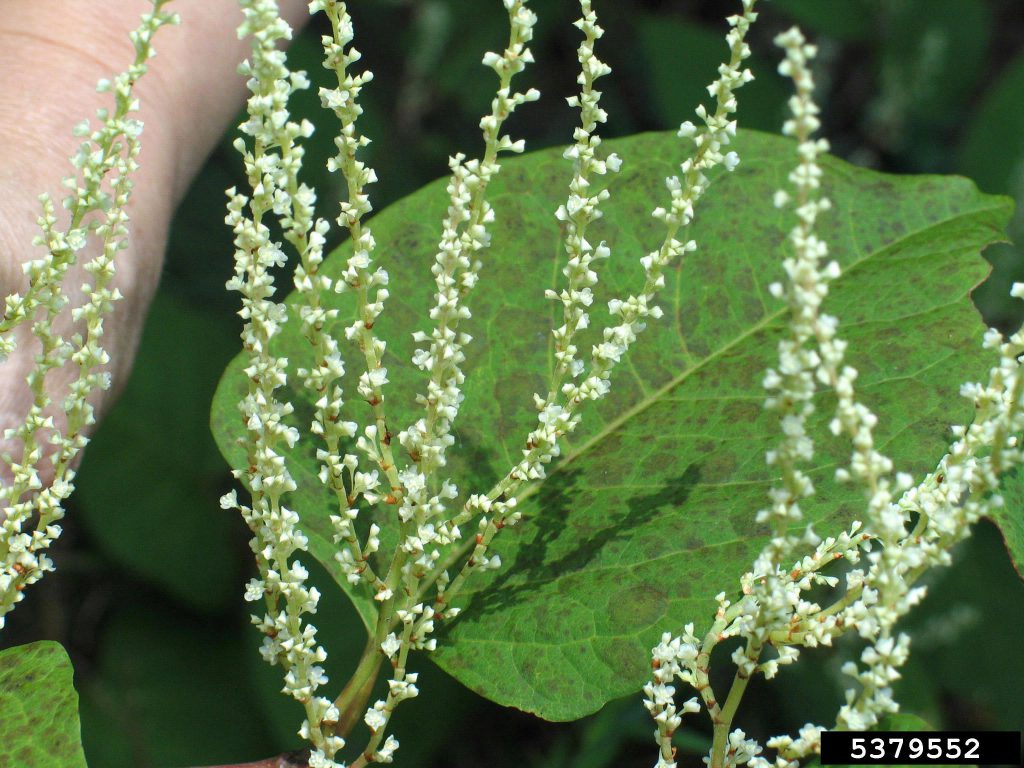Scientific name: Reynoutrica japonica
What Is It?
Japanese knotweed (Fallopia japonica), an escaped ornamental, is a shrubby plant that grows back every year. It was first introduced in the United States from Asia. This noxious weed grows very aggressively along roadways, neglected gardens, streambeds, and in moist, wet places.
Is It Here Yet?
Yes. It can be found throughout Washington.
Why Should I Care?
Japanese knotweed grows vigorously, creating dense colonies that make it hard or impossible for other native plants to survive. Its ability to out-compete other species results in an altered natural environment. Once established, it is very difficult to remove.
How Can We Stop It?
To stop the spread of Japanese knotweed, it is critical to prevent new plants from establishing. New growth can sprout easily from very small fragments left behind. When controlling or removing the plant, ensure all plant material is removed and then burned or dried. Small infestations, if caught early, can be pulled by hand or dug out of the ground. Cutting the plant frequently for many years in a row eventually will kill the plant. Placing a tarp or thick lawn fabric over knotweed plants may provide temporary control.
This species is listed as a Class B noxious weed, meaning that it is designated for control in certain state regions. Japanese knotweed also is on Washington’s Noxious Weed Seed and Plant Quarantine list, meaning it is prohibited to transport, buy, sell, offer for sale, or distribute Japanese knotweed plants, plant parts, or seeds.
What Are Its Characteristics?
- Japanese knotweed can grow up to 8 feet tall.
- Its flowers are whitish with clusters that are longer than the leaves.
- The plants stems are reddish brown and hollow.
- The leaves are 4-6 inches long with a triangular tip and a blunt base. Shiny brown seeds are about 1/8 inch long and triangular.
How Do I Distinguish It From Native Species?
Japanese knotweed may be confused with other knotweed species, but Japanese knotweed is much shorter than bohemian or giant knotweed.
Additional Photographs




